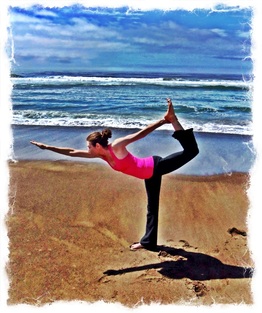|
Why Am I So Anxious?
Every human feels anxiety on occasion; it is a part of life. All of us know what it is like to feel worry, nervousness, fear, and concern. We feel nervous when we have to give a speech, go for a job interview, or walk into our boss’s office for the annual performance appraisal. We know it’s normal to feel a surge of fear when we unexpectedly see a photo of a snake or look down from the top of a tall building. Most of us manage these kinds of anxious feelings fairly well and are able to carry on with our lives without much difficulty. These feelings don’t disrupt our lives. But millions of people (an estimated 15% of the population) suffer from devastating and constant anxiety that severely affects their lives, sometimes resulting in living in highly restricted ways. These people experience panic attacks, phobias, extreme shyness, obsessive thoughts, and compulsive behaviors. The feeling of anxiety is a constant and dominating force that disrupts their lives. Some become prisoners in their own homes, unable to leave to work, drive, or visit the grocery store. For these people, anxiety is much more than just an occasional wave of apprehension. Types of Anxiety Disorders An anxiety disorder affects a person’s behavior, thoughts, feelings, and physical sensations. The most common anxiety disorders include the following: Social anxiety or social phobia is a fear of being around other people. People who suffer from this disorder always feel self-conscious around others. They have the feeling that everyone is watching them and staring at them, being critical in some way. Because the anxiety is so painful, they learn to stay away from social situations and avoid other people. Some eventually need to be alone at all times, in a room with the door closed. The feeling is pervasive and constant and even happens with people they know. People who have social anxiety know that their thoughts and fears are not rational. They are aware that others are not actually judging or evaluating them at every moment. But this knowledge does not make the feelings disappear Panic disorder is a condition where a person has panic attacks without warning. According to the National Institutes of Mental Health, about 5% of the adult American population suffers from panic attacks. Some experts say that this number is actually higher, since many people experience panic attacks but never receive treatment. Common symptoms of panic include: • Racing or pounding heart • Trembling • Sweaty palms • Feelings of terror
1 Comment
Yeah. Unfortunately, it is a real thing. People are scared, confused, outraged, and very divided. Regardless of which party or candidate you support anxiety is up for everyone. Before the debate last night I found myself thinking, "What are they going to say? Will it upset me? Will it separate me even more from those I know who feel differently about the issues and candidates than I? Why can't we dialogue about this in a sensible manner? Oh yuck. I don't like this." I am guessing I was not alone in my thoughts and feelings. So, to address this anxiety, I am posting a blog on coping with political anxiety posted by another Emotionally Focused Therapist. Click here as it is worth a read. It is called "The Antidote to Political Yuck." I hope it helps to provide some coping strategies during this stressful time.
 In August I will celebrate practicing yoga for eight years. As a result of this practice, I have received many emotional and physical benefits. I feel strong, alert and calm during and after I practice. I have also met a lot of really nice people. As I get older, practicing is not always easy but it is always rewarding. Technology is getting better and anecdotal evidence regarding the benefits of yoga is now documented by research. Very cool to know the science behind what I feel. Here is a great video from uplift connect.com showing the science behind yoga. One study has shown yoga helps decrease depression and anxiety. What good news for sufferers of these maladies! Hope you enjoy this clip. 1. Stress is increasing 2. Complexity is increasing 3. Isolation is increasing What can we do? Every human feels anxiety on occasion; it is a part of life. All of us know what it is like to feel worry, nervousness, fear, and concern. We feel nervous when we have to give a speech, go for a job interview, or walk into our boss’s office for the annual performance appraisal. We know it’s normal to feel a surge of fear when we unexpectedly see a photo of a snake or look down from the top of a tall building. Most of us manage these kinds of anxious feelings fairly well and are able to carry on with our lives without much difficulty. These feelings don’t disrupt our lives.
But millions of people (an estimated 15% of the population) suffer from devastating and constant anxiety that severely affects their lives, sometimes resulting in living in highly restricted ways. These people experience panic attacks, phobias, extreme shyness, obsessive thoughts, and compulsive behaviors. The feeling of anxiety is a constant and dominating force that disrupts their lives. Some become prisoners in their own homes, unable to leave to work, drive, or visit the grocery store. For these people, anxiety is much more than just an occasional wave of apprehension. Types of Anxiety Disorders An anxiety disorder affects a person’s behavior, thoughts, feelings, and physical sensations. The most common anxiety disorders include the following: Social anxiety or social phobia is a fear of being around other people. People who suffer from this disorder always feel self-conscious around others. They have the feeling that everyone is watching them and staring at them, being critical in some way. Because the anxiety is so painful, they learn to stay away from social situations and avoid other people. Some eventually need to be alone at all times, in a room with the door closed. The feeling is pervasive and constant and even happens with people they know. People who have social anxiety know that their thoughts and fears are not rational. They are aware that others are not actually judging or evaluating them at every moment. But this knowledge does not make the feelings disappear. Panic disorder is a condition where a person has panic attacks without warning. According to the National Institutes of Mental Health, about 5% of the adult American population suffers from panic attacks. Some experts say that this number is actually higher, since many people experience panic attacks but never receive treatment. Common symptoms of panic include: • Racing or pounding heart • Trembling • Sweaty palms • Feelings of terror • Chest pains or heaviness in the chest • Dizziness and lightheadedness • Fear of dying • Fear of going crazy • Fear of losing control • Feeling unable to catch one’s breath • Tingling in the hands, feet, legs, or arms |
Evelyn Schmechtig CochranCategories
All
Archives
February 2024
|

















